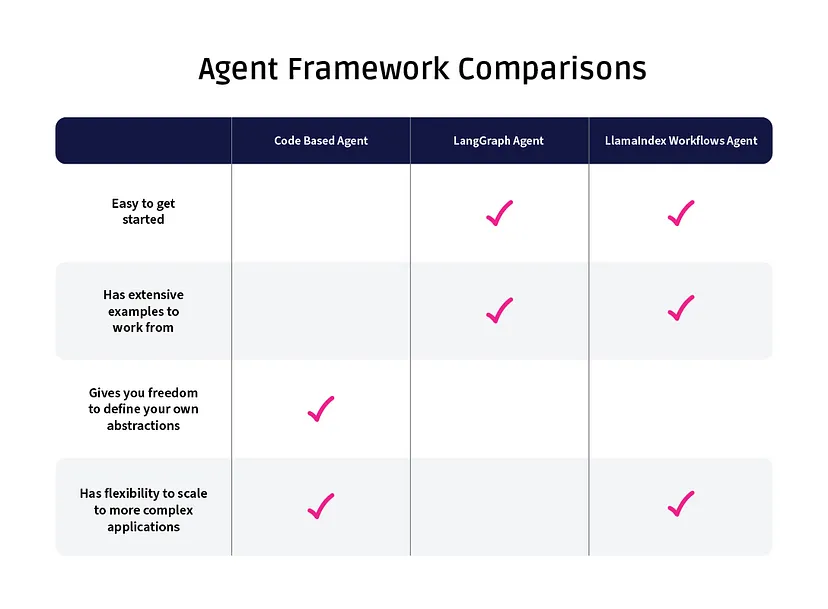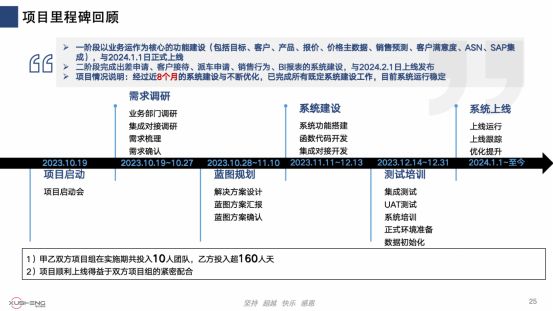| paper | https://arxiv.org/abs/2303.15343 |
|---|---|
| github | https://github.com/google-research/big_vision |
| 个人博客位置 | http://myhz0606.com/article/siglip |
1 背景
CLIP[1]自提出以来在zero-shot分类、跨模态搜索、多模态对齐等多个领域得到广泛应用。得益于其令人惊叹的能力,激起了研究者广泛的关注和优化。
目前对CLIP的优化主要可以分为两大类:其一是如何降低CLIP的训练成本;其二是如何提升CLIP的performance。
对于第一类优化任务的常见思路有3种。1)优化训练架构,如LiT[2]通过freezen image encoder,单独训练text encoder来进行text 和image的对齐来加速训练;2)减少训练token,如FLIP[3]通过引入视觉mask,通过只计算非mask区域的视觉表征来实现加速(MAE[4]中的思路)。3)优化目标函数,如CatLIP[5]将caption转为class label,用分类任务来代替对比学习任务来实现加速。
对于第二类提升CLIP的performance最常用和有效的手段就是数据治理,即构建高质量、大规模、高多样性的图文数据,典型的工作如:DFN[6]。
SigLIP这篇paper提出用sigmoid loss来做图文对比训练。这个方案既能降低训练成本,在小batch下(低于32k)performance也优于传统方法。
2 Method
为了方便阐述,符号定义如下:
| 符号 | |
|---|---|
| image encoder | f ( ⋅ ) f(\cdot) f(⋅) |
| text encoder | g ( ⋅ ) g(\cdot) g(⋅) |
| image | I I I |
| text | T T T |
| mini-batch | B = { ( I 1 , T 1 ) , ( I 2 , T 2 ) , ⋯ } \mathcal{B} = \{ (I_1, T_1), (I_2, T_2), \cdots \} B={(I1,T1),(I2,T2),⋯} |
对于经典的softmax-based优化目标InfoNCE,其核心思路是让positive的图文对的距离越近越好,让negative图文对的距离越远越好,计算公式如下:
− 1 2 ∣ B ∣ ∑ i = 1 ∣ B ∣ ( log e t x i ⋅ y i ∑ j = 1 ∣ B ∣ e t x i ⋅ y j ⏞ i m a g e → t e x t s o f t m a x + log e t x i ⋅ y i ∑ j = 1 ∣ B ∣ e t x j ⋅ y i ⏞ t e x t → i m a g e s o f t m a x ) (1) -\frac { 1 } { 2 | \mathcal { B } | } \sum _ { i = 1 } ^ { | \mathcal { B } | } \left( \overbrace { \log \frac { e ^ { t \mathbf { x } _ { i } \cdot \mathbf { y } _ { i } } } { \sum _ { j = 1 } ^ { | \mathcal { B } | } e ^ { t \mathbf { x } _ { i } \cdot \mathbf { y } _ { j } } } } ^ { \mathrm { i m a g e \space \to t e x t \space s o f t m a x } } + \overbrace { \log \frac { e ^ { t \mathbf { x } _ { i } \cdot \mathbf { y } _ { i } } } { \sum _ { j = 1 } ^ { | \mathcal { B } | } e ^ { t \mathbf { x } _ { j } \cdot \mathbf { y } _ { i } } } } ^ { \mathrm { t e x t } \rightarrow \mathrm{image \, softmax} } \right) \tag{1} −2∣B∣1i=1∑∣B∣ log∑j=1∣B∣etxi⋅yjetxi⋅yi image →text softmax+log∑j=1∣B∣etxj⋅yietxi⋅yi text→imagesoftmax (1)
其中: x i = f ( I i ) ∥ f ( I i ) ∥ 2 , \begin{array} { r } { \mathbf { x } _ { i } = \frac { f ( I _ { i } ) } { \| f ( I _ { i } ) \| _ { 2 } } \; , } \end{array} xi=∥f(Ii)∥2f(Ii), y i = g ( T i ) ∥ g ( T i ) ∥ 2 \mathbf { y } _ { i } = \frac { g ( T _ { i } ) } { \| g ( T _ { i } ) \| _ { 2 } } yi=∥g(Ti)∥2g(Ti)
InfoNCE的缺点
- softmax的计算存在数值不稳定的问题,需要引入额外的trick保证softmax的计算稳定性。详情见附录。
- 计算量大。softmax loss的非对称(asymmetry),需要做了两次normalization,即 ∑ j = 1 ∣ B ∣ e t x j ⋅ y i ≠ ∑ j = 1 ∣ B ∣ e t x i ⋅ y j \sum _ { j = 1 } ^ { | \mathcal { B } | } e ^ { t \mathbf { x } _ { j } \cdot \mathbf { y } _ { i } } \neq \sum _ { j = 1 } ^ { | \mathcal { B } | } e ^ { t \mathbf { x } _ { i } \cdot \mathbf { y } _ { j } } ∑j=1∣B∣etxj⋅yi=∑j=1∣B∣etxi⋅yj 。并且计算稳定性的trick也需要引入额外的计算量。
- 显存占用大,由于要计算normalize,需要维护一个很大的概率分布矩阵。假定batch size为32k,那么这个概率分布矩阵的大小为 32 k × 32 k 32k \times 32k 32k×32k
下面来看文本提出的sigmoid loss 。其定义如下:
− 1 ∣ B ∣ ∑ i = 1 ∣ B ∣ ∑ j = 1 ∣ B ∣ log 1 1 + e z i j ( − t x i ⋅ y j + b ) ⏟ L i j (2) -\frac { 1 } { | \mathcal { B } | } \sum _ { i = 1 } ^ { | \mathcal { B } | } \sum _ { j = 1 } ^ { | \mathcal { B } | } \underbrace { \log \frac { 1 } { 1 + e ^ { z _ { i j } ( - t \mathbf { x } _ { i } \cdot \mathbf { y } _ { j } + b ) } } } _ { \mathcal { L } _ { i j } } \tag{2} −∣B∣1i=1∑∣B∣j=1∑∣B∣Lij log1+ezij(−txi⋅yj+b)1(2)
从上式可见,Sigmoild loss将每对图文对独立看待。即分别将每对图文对做二分类。
- 当 ( I i , T i ) (I_i, T_i) (Ii,Ti)时为正例。
- 当 ( I i , T j , j ≠ i ) (I_i, T_{j, j\neq i}) (Ii,Tj,j=i)时为负例。
式子中, z i j z _ { i j } zij为图文对的标签,1表示是正例,-1表示是负例。直观来看,式(2)明显存在正负样本不均衡的问题,batch size为 ∣ B ∣ |\mathcal{B}| ∣B∣时,正例数为 ∣ B ∣ |\mathcal{B}| ∣B∣,负例数为 ∣ B ∣ 2 − ∣ B ∣ |\mathcal{B}|^ 2 - |\mathcal{B}| ∣B∣2−∣B∣。为了缓解正负样本不均衡,作者引入两个learnable parameter t , b t,b t,b来调节正负例的梯度,初始时 t ′ = log 10 t'=\log 10 t′=log10, b = − 10 b=-10 b=−10。附录对这两个参数的作用机理进行了浅要分析。

多卡场景下,可以用式(3)的通信策略实现高效训练。
− 1 B ∑ d i = 1 D ⏟ A ∀ d e v i c e d i ∑ d j = 1 D ⏞ B : s w a p n e g s a c r o s s d e v i c e s ∑ i = b d i b ( d i + 1 ) ⏟ a l l l o c a l p o s i t i v e s ∑ j = b d j b ( d j + 1 ) ⏟ n e g s f r o m n e x t d e v i c e L i j ⏞ C : p e r d e v i c e l o s s (3) -\frac{1}{\mathcal{B}} \underbrace{ \sum _ {d_i = 1} ^ {D} } _ {\mathbf{A} \, \forall \, \mathrm{device} \, d_i} \overbrace{ \sum _ {d_j = 1} ^ {D} }^{\substack{\mathbf{B:\,} \mathrm{swap\, negs} \\ \mathrm{across\, devices}}} \overbrace{ \underbrace{\sum_{i=bd_i}^{b(d_i + 1)}}_{ \substack{ \mathrm{all \, local} \\ \mathrm{ positives}}} \underbrace{\sum_{j=bd_j}^{b(d_j + 1)}}_{ \substack{ \mathrm{negs \, from} \\ \mathrm{next \, device}}} \mathcal{L}_{ij} }^{\mathbf{C:\,} \mathrm{per\, device \, loss}} \tag{3} −B1A∀devicedi di=1∑Ddj=1∑D B:swapnegsacrossdevicesalllocalpositives i=bdi∑b(di+1)negsfromnextdevice j=bdj∑b(dj+1)Lij C:perdeviceloss(3)

sigmoid-based contrastive learning的理论说完了,下面从实验的角度分析sigmoid loss的一些特性。
3 Experiment
3.1 Setting
(一) 模型
作者将基于sigmoid loss训练的CLIP称为SigLIP(Sigmoid loss for Language-Image Pre-training), 将sigmoid loss和LiT[2]架构训练的CLIP称为SigLIT (sigmoid LiT)
(二) 评估指标
作者主要从以下2个指标来评估模型的性能
Imagenet的zero shot准确率XM3600多语言数据集的zero shot跨模态搜索准确率。
(三)训练数据集
webLi[9]
3.2 The influence of batch size
在之前的研究表明[8]:对比学习的batch size越大,效果越好。但之前的研究受限成本,最大只研究到64k。这篇paper将batch size扩大到1M。结果表明,当batch size达到32k,继续扩大的收益就很低了,达到256k后,收益达到顶峰。随后根据上述经验,作者对比了sigmoid和softmax的scale up batch size的能力,有以下几点核心结论:
- sigmoid loss相比softmax loss更节约显存。用sigmoid loss时,4张TPU-v4能够容纳4096个batch size,但若用softmax,batch size只能容纳2048。
- 在小batch下(batch size低于32k)sigmoid-based明显优于softmax-based loss,随着batch size进一步增加,二者差距逐渐减少。


作者给出了2个微调经验
1)微调时image encoder不要引入weight-decay
2)增加batch size时,transformer的训练开始变得不稳定,通过设小beta2有助于huan jie。

3.3 The influence of positive and negative pairs ratio
对于sigmoid来说,它的loss是以pair为粒度计算的,positive和negative非常不平衡。以batch size ∣ B ∣ = 16 k |\mathcal{B}| = 16k ∣B∣=16k为例(有16k个图文对),只有 16 k 16k 16k个positive samples,但有 16 k ∗ 16 k − 16 k = 16 k ( 16 k − 1 ) 16k * 16k - 16k = 16k(16k-1) 16k∗16k−16k=16k(16k−1)个negative samples,其positive和negative的比率约为 1 : 16 k 1:16k 1:16k。
因此,有必要深入探究positive和negative的不平衡对模型的影响。得益于sigmoid loss(式2)以pair为粒度的计算方式,我们可以很方便的人为控制正负样本的比例。作者尝试了4种方式调控positive和negative的比例
- Random: 通过随机mask掉negative sample,来保证positive和negative的占比
- Hard:通过mask掉loss较低的negative sample ,来保证positive和negative的占比
- Hard, matched pair:通过mask掉loss较低的negative的sample,来保证positive和negative的占比。由于上述mask的操作,模型的“pair seen”少,此实验通过增加iteration来保证”pair seen”和原始一致。(相当于常用的resample方法)
- Easy:通过mask掉loss较高的negative sample,来保证positive和negative的占比。
作者在SigLIT上用进行以上四种mask out机制的实验。 ∣ B ∣ = 16 k |\mathcal{B}| = 16k ∣B∣=16k,迭代 I t e r = 900 M \mathrm{Iter}=900M Iter=900M

结果表明:
- 不做matched pair的情况下,用3种mask方式均会造成精度下降。影响程度:easy>random>hard。
- Hard sample mining + matched pair有助于进一步提升模型性能。
- 当正负样本的imbalance减弱时,learnable bias和pair的logit都在上升,说明了预设的learnable bias起到了积极的作用。
总体来看,得益于learnable temperature和learnable bias,sigmoid loss的正负样本不均衡基本不会导致模型性能下降。
文中对这两个超参数的初始值进行了进一步实验,结果如下。(可见引入合适的prior knowledge对提升模型performance非常有效)

3.4 Label noise robustness
作者进一步评估数据噪声对模型鲁棒性的影响。通过以下五种方法“污染”训练噪声:
- Image:以概率 p p p将图文对的图片用均匀噪声替换;
- Text:以概率 p p p将图文对的文本token序列用随机采样的等长token序列替换;
- Batch alignment: 随机将batch中的 p % p\% p%的sample的图文pair进行shuffle;
- Image & text: 同时进行1.和2.
- Image, text & batch: 同时进行3和4
从结果可见,sigmoid loss在“污染”数据的performance更好。

4 小结
sigmoid-based contrastive learning从经典的softmax-based contrastive learning的“pick the right class”转化为“rate this pair”。这个转化实现了compute efficient和memory efficient,并在实验中证明,siglip在小batch下(低于32k)更具优势。
5 参考文献
[1] Learning Transferable Visual Models From Natural Language Supervision
[2] LiT: Zero-Shot Transfer With Locked-Image Text Tuning
[3] Scaling Language-Image Pre-training via Masking
[4] Masked Autoencoders Are Scalable Vision Learners
[5] CatLIP: CLIP-level Visual Recognition Accuracy with 2.7x Faster Pre-training on Web-scale Image-Text Data
[6] Data Filtering Networks
[7] Representation Learning with Contrastive Predictive Coding
[8] Combined Scaling for Zero-shot Transfer Learning
[9] Pali: A jointly-scaled multilingual languageimage model.
6 附录
6.1 附录一:softmax的溢出问题
- 解决上溢出问题
Softmax ( x i ) = exp ( x i ) ∑ j = 1 N exp ( x j ) = exp ( x i ) / exp ( x m a x ) ∑ j = 1 N exp ( x j ) / exp ( x m a x ) = exp ( x i − x m a x ) ∑ j = 1 N exp ( x j − x m a x ) (3) \begin{aligned} \text{Softmax}(x_{i}) &= \frac{\exp(x_i) }{ \sum_{j=1}^{N} \exp(x_j)} \\ &= \frac{\exp(x_i) / \exp{(x_{max})}}{ \sum_{j=1}^{N} \exp(x_j) / \exp{(x_{max})} } \\ &= \frac{\exp(x_i - x_{max})}{ \sum_{j=1}^{N} \exp(x_j - x_{max})} \end{aligned} \tag{3} Softmax(xi)=∑j=1Nexp(xj)exp(xi)=∑j=1Nexp(xj)/exp(xmax)exp(xi)/exp(xmax)=∑j=1Nexp(xj−xmax)exp(xi−xmax)(3)
-
当 x m a x x_{max} xmax很大时,分子可能出现 0 0 0,当和 c r o s s e n t r o p y \mathrm{cross \, entropy} crossentropy联用时,会出现 l o g ( 0 ) log(0) log(0),此时应当进行如下变形。
log s o f t m a x ( x i ) = log ( exp ( x i − x m a x ) ∑ j = 1 N exp ( x j − x m a x ) ) = log exp ( x i − x m a x ) − log ∑ j = 1 N exp ( x j − x m a x ) = ( x i − x m a x ) − log ∑ j = 1 N exp ( x j − x m a x ) ⏟ > 1 (4) \begin{aligned} \log \mathrm{softmax}(x_i) &= \log \Bigr( {\frac{\exp(x_i - x_{max})}{ \sum_{j=1}^{N} \exp(x_j - x_{max})}} \Bigr) \\ & = \log \exp(x_i - x_{max}) - \log { \sum_{j=1}^{N} \exp(x_j - x_{max}) } \\ & = (x_i - x_{max}) - \log { \underbrace{\sum_{j=1}^{N} \exp(x_j - x_{max}) }_{\gt 1} } \end{aligned} \tag{4} logsoftmax(xi)=log(∑j=1Nexp(xj−xmax)exp(xi−xmax))=logexp(xi−xmax)−logj=1∑Nexp(xj−xmax)=(xi−xmax)−log>1 j=1∑Nexp(xj−xmax)(4)
6.2 附录2: sigmoid loss梯度分析
L = − 1 ∣ B ∣ ∑ i = 1 ∣ B ∣ ∑ j = 1 ∣ B ∣ log 1 1 + e z i j ( − t x i ⋅ y j + b ) = − 1 ∣ B ∣ ∑ i = 1 ∣ B ∣ ∑ j = 1 ∣ B ∣ log S i g m o i d ( − z i j ( − t x i ⋅ y j + b ) ) (5) \mathcal{L} = - \frac { 1 } { | \mathcal { B } | } \sum _ { i = 1 } ^ { | \mathcal { B } | } \sum _ { j = 1 } ^ { | \mathcal { B } | } \log \frac { 1 } { 1 + e ^ { z _ { i j } ( - t \mathbf { x } _ { i } \cdot \mathbf { y } _ { j } + b ) } } \\ = - \frac { 1 } { | \mathcal { B } | } \sum _ { i = 1 } ^ { | \mathcal { B } | } \sum _ { j = 1 } ^ { | \mathcal { B } | } \log \mathrm{Sigmoid}(- z _ { i j } ( - t \mathbf { x } _ { i } \cdot \mathbf { y } _ { j } + b )) \tag{5} L=−∣B∣1i=1∑∣B∣j=1∑∣B∣log1+ezij(−txi⋅yj+b)1=−∣B∣1i=1∑∣B∣j=1∑∣B∣logSigmoid(−zij(−txi⋅yj+b))(5)
梯度
S i g m o i d ( x ) ′ = S i g m o i d ( x ) ( 1 − S i g m o i d ( x ) ) (6) \mathrm{Sigmoid}(x)^{\prime} = \mathrm{Sigmoid}(x) (1 - \mathrm{Sigmoid}(x)) \tag{6} Sigmoid(x)′=Sigmoid(x)(1−Sigmoid(x))(6)
∂ L ∂ x i = ∂ ( − 1 ∣ B ∣ ∑ i = 1 ∣ B ∣ ∑ j = 1 ∣ B ∣ log S i g m o i d ( − z i j ( − t x i ⋅ y j + b ) ) ) ∂ x i = − 1 ∣ B ∣ ∑ j = 1 ∣ B ∣ ∂ ( log S i g m o i d ( − z i j ( − t x i ⋅ y j + b ) ) ) ) ∂ x i = − 1 ∣ B ∣ ∑ j = 1 ∣ B ∣ 1 S i g m o i d ( − z i j ( − t x i ⋅ y j + b ) ) [ S i g m o i d ( − z i j ( − t x i ⋅ y j + b ) ) ( 1 − S i g m o i d ( − z i j ( − t x i ⋅ y j + b ) ) ) ] ∗ ( z i j t ) ⋅ y j = − z i j t ∣ B ∣ ∑ j = 1 ∣ B ∣ ( 1 − S i g m o i d ( − z i j ( − t x i ⋅ y j + b ) ) ) ⏟ c o e f ⋅ y j (7) \begin{align*} \frac{\partial{\mathcal{L}}}{\partial \mathbf {x_i}} &= \frac{\partial (- \frac { 1 } { | \mathcal { B } | } \sum _ { i = 1 } ^ { | \mathcal { B } | } \sum _ { j = 1 } ^ { | \mathcal { B } | } \log \mathrm{Sigmoid}(- z _ { i j } ( - t \mathbf { x } _ { i } \cdot \mathbf { y } _ { j } + b )))}{\partial \mathbf {x_i}} \\ &= - \frac { 1 } { | \mathcal { B } | } \sum _ { j = 1 } ^ { | \mathcal { B } | } \frac{\partial( \log \mathrm{Sigmoid}(- z _ { i j } ( - t \mathbf { x } _ { i } \cdot \mathbf { y } _ { j } + b ))) )}{\partial \mathbf {x_i}} \\ &= - \frac { 1 } { | \mathcal { B } | } \sum _ { j = 1 } ^ { | \mathcal { B } | } \frac{1}{\mathrm{Sigmoid}(- z _ { i j } ( - t \mathbf { x } _ { i } \cdot \mathbf { y } _ { j } + b ))}[\mathrm{Sigmoid}(- z _ { i j } ( - t \mathbf { x } _ { i } \cdot \mathbf { y } _ { j } + b )) (1 - \mathrm{Sigmoid}(- z _ { i j } ( - t \mathbf { x } _ { i } \cdot \mathbf { y } _ { j } + b )))]* (z_{ij}t)\cdot \mathbf { y } _ { j } \\ &= \underbrace{-\frac { z_{ij}t } { | \mathcal { B } | } \sum _ { j = 1 } ^ { | \mathcal { B } | } (1 - \mathrm{Sigmoid}(- z _ { i j } ( - t \mathbf { x } _ { i } \cdot \mathbf { y } _ { j } + b )))}_{\mathrm{coef }} \cdot \mathbf { y } _ { j } \end{align*} \tag{7} ∂xi∂L=∂xi∂(−∣B∣1∑i=1∣B∣∑j=1∣B∣logSigmoid(−zij(−txi⋅yj+b)))=−∣B∣1j=1∑∣B∣∂xi∂(logSigmoid(−zij(−txi⋅yj+b))))=−∣B∣1j=1∑∣B∣Sigmoid(−zij(−txi⋅yj+b))1[Sigmoid(−zij(−txi⋅yj+b))(1−Sigmoid(−zij(−txi⋅yj+b)))]∗(zijt)⋅yj=coef −∣B∣zijtj=1∑∣B∣(1−Sigmoid(−zij(−txi⋅yj+b)))⋅yj(7)
当为正例 z i j = 1 z_{ij} = 1 zij=1
∂ L ∂ x i = − t ∣ B ∣ ∑ j = 1 ∣ B ∣ ( 1 − S i g m o i d ( t x i ⋅ y j − b ) ) ⋅ y j (8) \frac{\partial{\mathcal{L}}}{\partial \mathbf {x_i}} = - \frac { t } { | \mathcal { B } | } \sum _ { j = 1 } ^ { | \mathcal { B } | } (1 - \mathrm{Sigmoid}( t \mathbf { x } _ { i } \cdot \mathbf { y } _ { j } - b ))\cdot \mathbf { y } _ { j } \tag{8} ∂xi∂L=−∣B∣tj=1∑∣B∣(1−Sigmoid(txi⋅yj−b))⋅yj(8)
当为负例 z i j = − 1 z_{ij} = -1 zij=−1
∂ L ∂ x i = t ∣ B ∣ ∑ j = 1 ∣ B ∣ ( 1 − S i g m o i d ( − t x i ⋅ y j + b ) ) ⋅ y j (9) \frac{\partial{\mathcal{L}}}{\partial \mathbf {x_i}} = \frac { t } { | \mathcal { B } | } \sum _ { j = 1 } ^ { | \mathcal { B } | } (1 - \mathrm{Sigmoid}( - t \mathbf { x } _ { i } \cdot \mathbf { y } _ { j } + b ))\cdot \mathbf { y } _ { j } \tag{9} ∂xi∂L=∣B∣tj=1∑∣B∣(1−Sigmoid(−txi⋅yj+b))⋅yj(9)
通过预设 ( b , t ) = ( 0 , 1 ) (b, t)=(0,1) (b,t)=(0,1)和 ( − 10 , log 10 ) (-10, \log10) (−10,log10)时不同logits下正负样本梯度的coefficient。




















